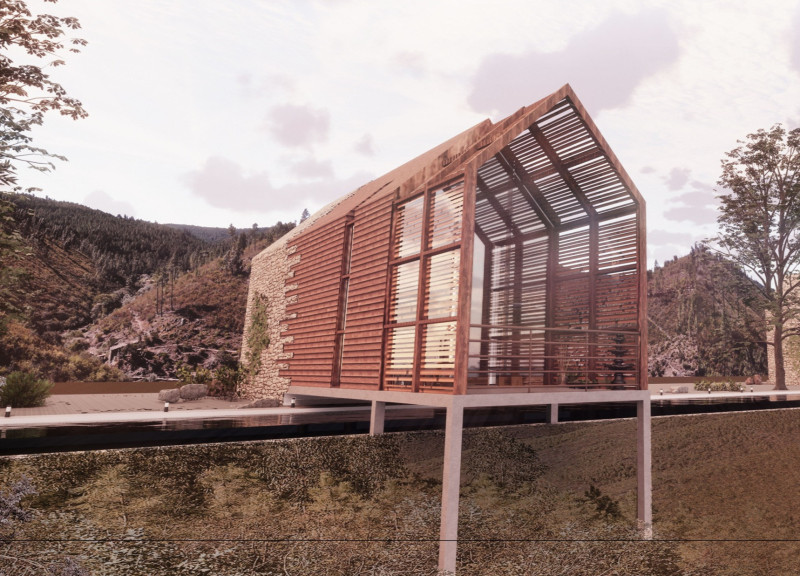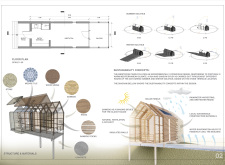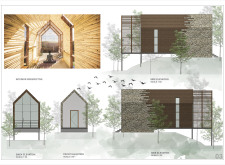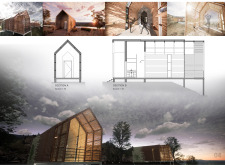5 key facts about this project
The VALE DE MOSES MEDITATION CABINS are located in Portugal and designed to facilitate introspection and calm. The project emphasizes the meditative journey by creating spaces that transition from private to open environments. Careful attention in the design encourages users to engage deeply with both themselves and their natural surroundings.
Design Concept
A private entrance serves as the initial aspect of the cabin, providing a secluded area that includes storage and a sink. This feature creates a cave-like atmosphere, helping users prepare mentally for meditation. The layout shifts focus from outside distractions, making it easier for individuals to concentrate on their inner experience.
Meditation Space
As users move further into the cabin, they encounter a semi-open meditation area. This space utilizes wood and glass, allowing in natural light while promoting a connection to the landscape. The integration of indoor and outdoor experiences enhances the user's interaction with nature during meditation, creating a harmonious environment for reflection.
Outdoor Porch
The cabin culminates in an outdoor porch, which provides a light and airy space for relaxation. This area incorporates bamboo, adding a sense of tranquility. The choice of materials in this section reinforces the themes of mindfulness and connection to nature, enhancing the overall experience for users.
Site Flexibility
The arrangement of the cabins allows for flexibility in their placement. They can be positioned individually across the retreat or clustered together with reflecting pools in between. This design approach ensures each cabin retains its unique identity while promoting a varied experience for users. The thoughtful layout responds to the site's natural features and climate, creating a consistent link with the environment.
Natural materials such as stone at the entrance and bamboo in the outdoor areas highlight the careful balance between function and design. Each element contributes to an atmosphere designed for reflection, allowing users to engage fully with both the space and their surroundings.






















































